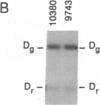Abstract
Red-green color vision in humans is mediated by the X chromosome-linked highly homologous red and green pigment genes. Color vision defects are caused by deletions and fusions involving these genes. However, we found the frequency of molecular abnormalities among Caucasians to be twice as high as that of phenotypic color vision defects. Among Japanese the frequency of phenotypic and molecular color vision defects was similar (approximately 5%). Among Afro-Americans, molecular defects (largely green-red fusion genes) were at least five times more frequent (21%) than phenotypic color vision defects (approximately 4%). In addition, 35% of Afro-Americans, 2% of Japanese, and less than 1% of Caucasians had a shortened red pigment gene not associated with phenotypic color vision defects. This gene lacked 1.9 kilobases in its first intron and had the identical size as the green pigment gene from which it presumably originated by gene conversion in an ancestral African population. This gene and the closely linked glucose-6-phosphate dehydrogenase A+ variant were in linkage equilibrium. A model for the evolutionary origin of the color vision pigment genes in higher primates is portrayed.
Full text
PDF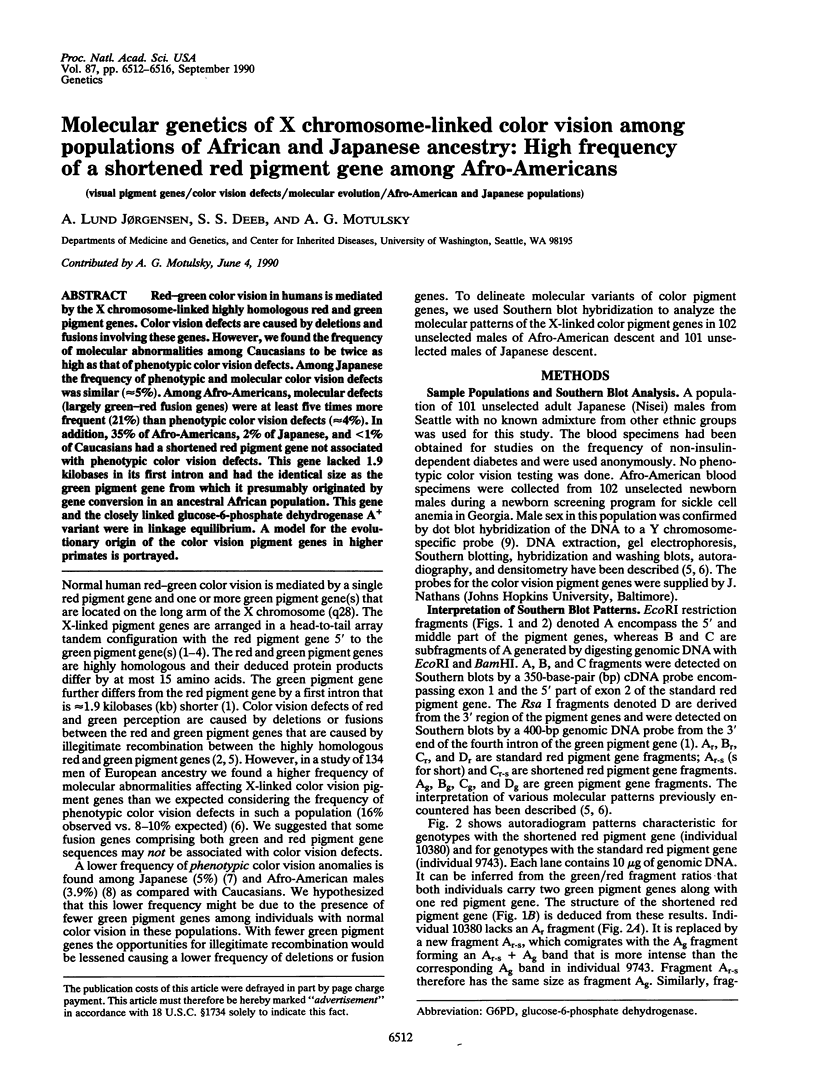

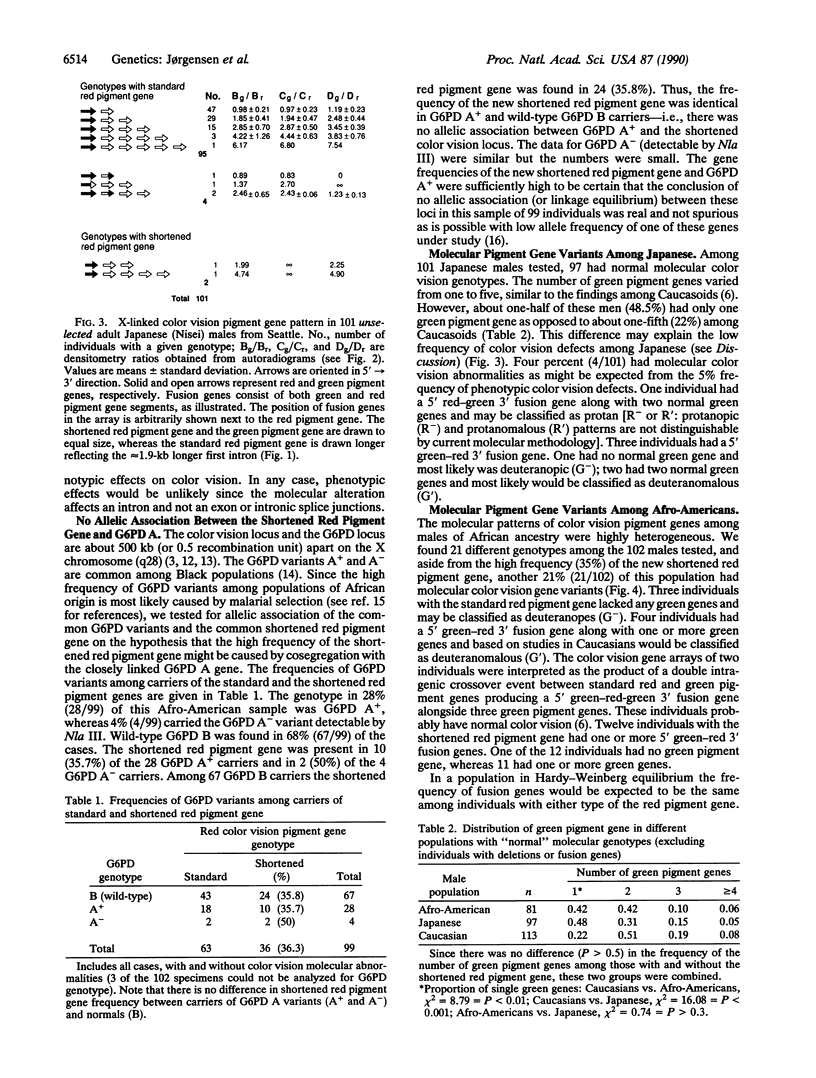
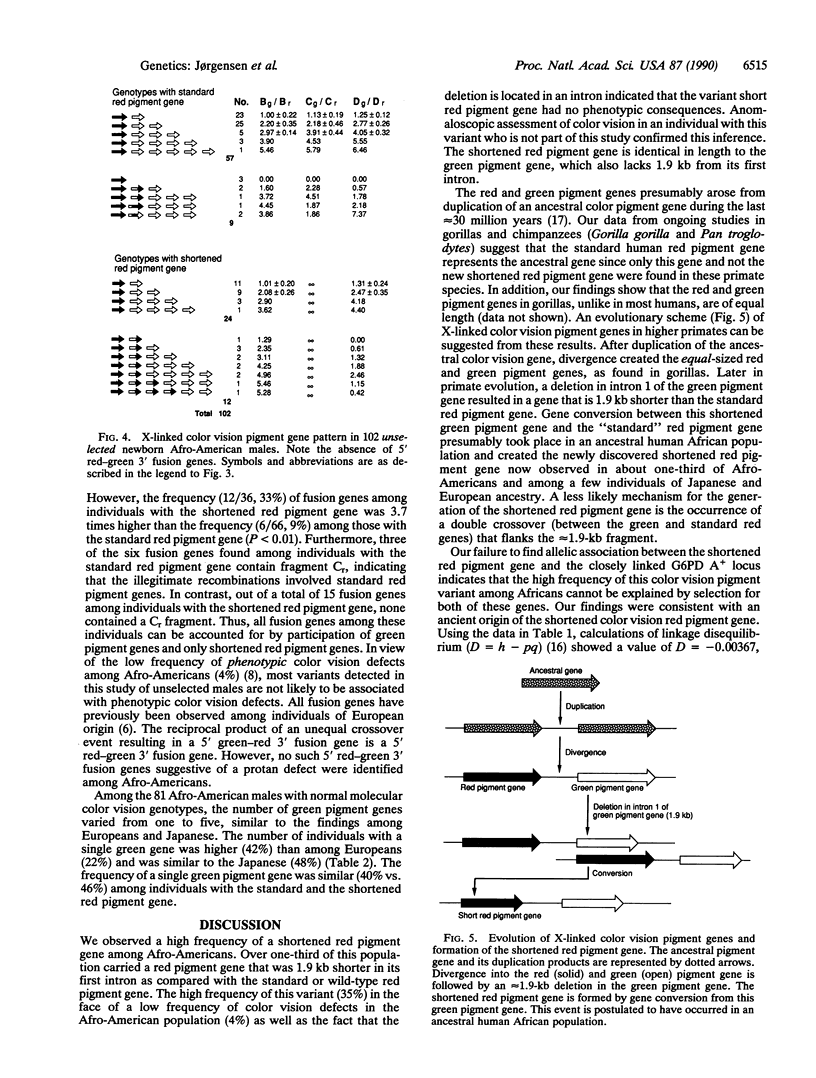
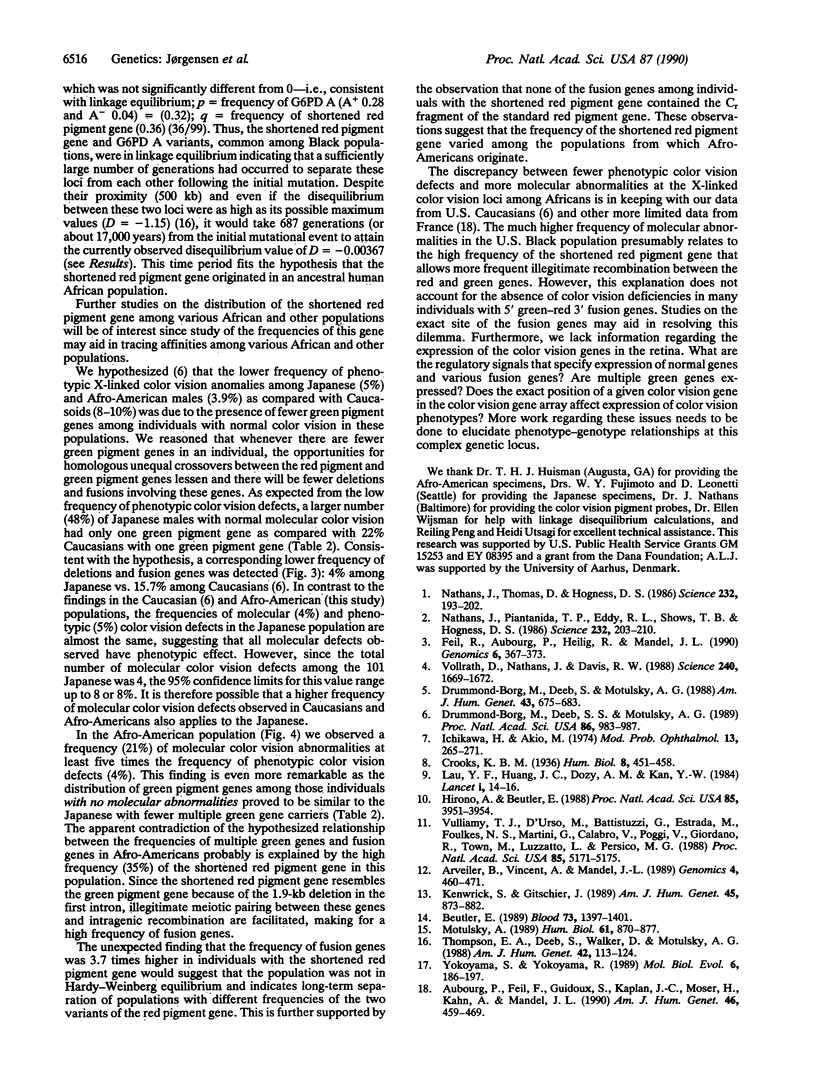
Images in this article
Selected References
These references are in PubMed. This may not be the complete list of references from this article.
- Arveiler B., Vincent A., Mandel J. L. Toward a physical map of the Xq28 region in man: linking color vision, G6PD, and coagulation factor VIII genes to an X-Y homology region. Genomics. 1989 May;4(4):460–471. doi: 10.1016/0888-7543(89)90269-3. [DOI] [PubMed] [Google Scholar]
- Aubourg P., Feil R., Guidoux S., Kaplan J. C., Moser H., Kahn A., Mandel J. L. The red-green visual pigment gene region in adrenoleukodystrophy. Am J Hum Genet. 1990 Mar;46(3):459–469. [PMC free article] [PubMed] [Google Scholar]
- Beutler E. Glucose-6-phosphate dehydrogenase: new perspectives. Blood. 1989 May 1;73(6):1397–1401. [PubMed] [Google Scholar]
- Drummond-Borg M., Deeb S. S., Motulsky A. G. Molecular patterns of X chromosome-linked color vision genes among 134 men of European ancestry. Proc Natl Acad Sci U S A. 1989 Feb;86(3):983–987. doi: 10.1073/pnas.86.3.983. [DOI] [PMC free article] [PubMed] [Google Scholar]
- Drummond-Borg M., Deeb S., Motulsky A. G. Molecular basis of abnormal red-green color vision: a family with three types of color vision defects. Am J Hum Genet. 1988 Nov;43(5):675–683. [PMC free article] [PubMed] [Google Scholar]
- Feil R., Aubourg P., Heilig R., Mandel J. L. A 195-kb cosmid walk encompassing the human Xq28 color vision pigment genes. Genomics. 1990 Feb;6(2):367–373. doi: 10.1016/0888-7543(90)90578-i. [DOI] [PubMed] [Google Scholar]
- Hirono A., Beutler E. Molecular cloning and nucleotide sequence of cDNA for human glucose-6-phosphate dehydrogenase variant A(-). Proc Natl Acad Sci U S A. 1988 Jun;85(11):3951–3954. doi: 10.1073/pnas.85.11.3951. [DOI] [PMC free article] [PubMed] [Google Scholar]
- Ichikawa H., Majima A. Genealogical studies on interesting families of defective colour vision discovered by a mass examination in Japan and Formosa. Mod Probl Ophthalmol. 1974;13(0):265–271. [PubMed] [Google Scholar]
- Kenwrick S., Gitschier J. A contiguous, 3-Mb physical map of Xq28 extending from the colorblindness locus to DXS15. Am J Hum Genet. 1989 Dec;45(6):873–882. [PMC free article] [PubMed] [Google Scholar]
- Lau Y. F., Huang J. C., Dozy A. M., Kan Y. W. A rapid screening test for antenatal sex determination. Lancet. 1984 Jan 7;1(8367):14–16. doi: 10.1016/s0140-6736(84)90182-x. [DOI] [PubMed] [Google Scholar]
- Motulsky A. G. Metabolic polymorphisms and the role of infectious diseases in human evolution. 1960. Hum Biol. 1989 Oct-Dec;61(5-6):835–877. [PubMed] [Google Scholar]
- Nathans J., Piantanida T. P., Eddy R. L., Shows T. B., Hogness D. S. Molecular genetics of inherited variation in human color vision. Science. 1986 Apr 11;232(4747):203–210. doi: 10.1126/science.3485310. [DOI] [PubMed] [Google Scholar]
- Nathans J., Thomas D., Hogness D. S. Molecular genetics of human color vision: the genes encoding blue, green, and red pigments. Science. 1986 Apr 11;232(4747):193–202. doi: 10.1126/science.2937147. [DOI] [PubMed] [Google Scholar]
- Thompson E. A., Deeb S., Walker D., Motulsky A. G. The detection of linkage disequilibrium between closely linked markers: RFLPs at the AI-CIII apolipoprotein genes. Am J Hum Genet. 1988 Jan;42(1):113–124. [PMC free article] [PubMed] [Google Scholar]
- Vollrath D., Nathans J., Davis R. W. Tandem array of human visual pigment genes at Xq28. Science. 1988 Jun 17;240(4859):1669–1672. doi: 10.1126/science.2837827. [DOI] [PubMed] [Google Scholar]
- Vulliamy T. J., D'Urso M., Battistuzzi G., Estrada M., Foulkes N. S., Martini G., Calabro V., Poggi V., Giordano R., Town M. Diverse point mutations in the human glucose-6-phosphate dehydrogenase gene cause enzyme deficiency and mild or severe hemolytic anemia. Proc Natl Acad Sci U S A. 1988 Jul;85(14):5171–5175. doi: 10.1073/pnas.85.14.5171. [DOI] [PMC free article] [PubMed] [Google Scholar]
- Yokoyama S., Yokoyama R. Molecular evolution of human visual pigment genes. Mol Biol Evol. 1989 Mar;6(2):186–197. doi: 10.1093/oxfordjournals.molbev.a040537. [DOI] [PubMed] [Google Scholar]




